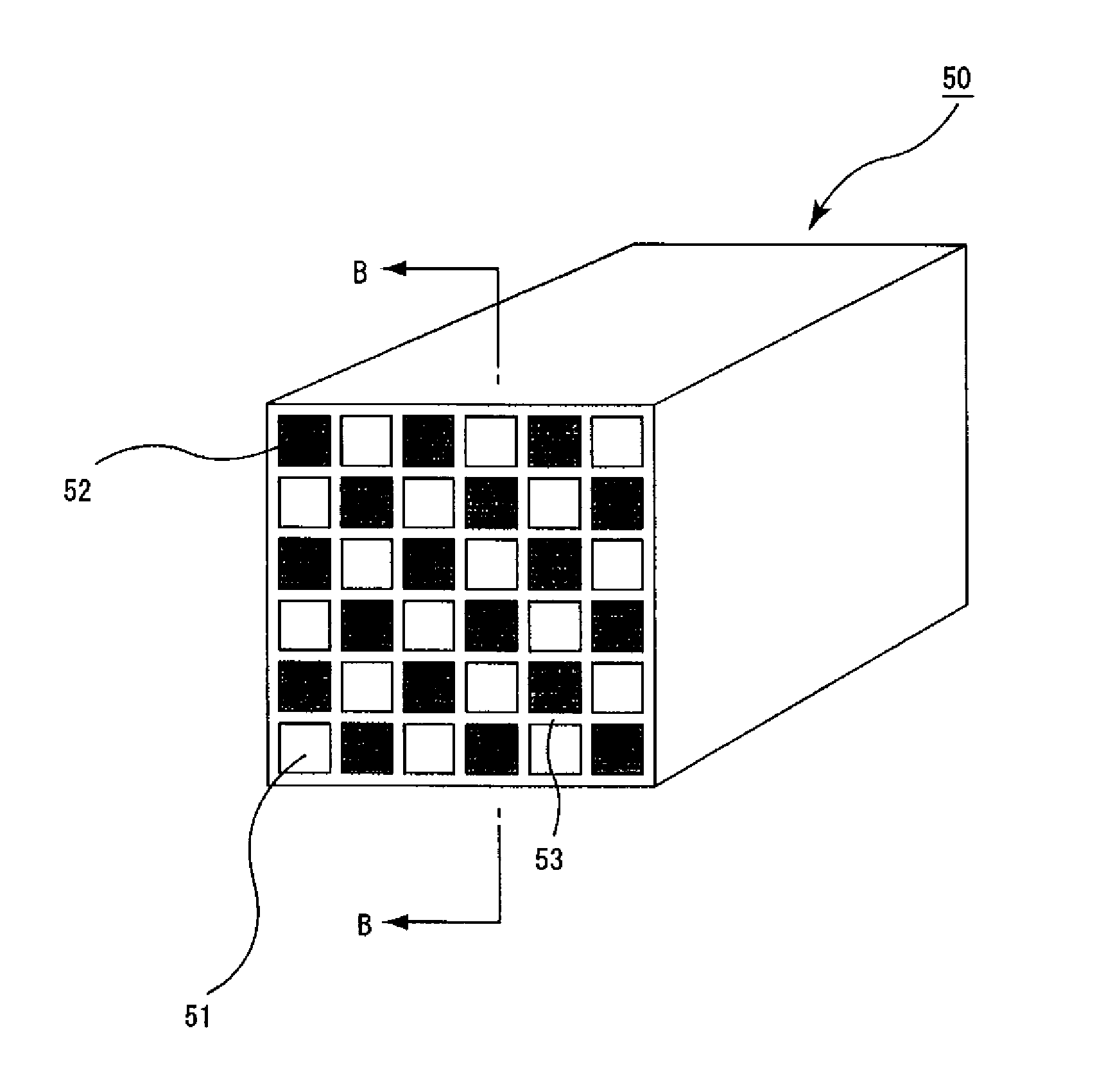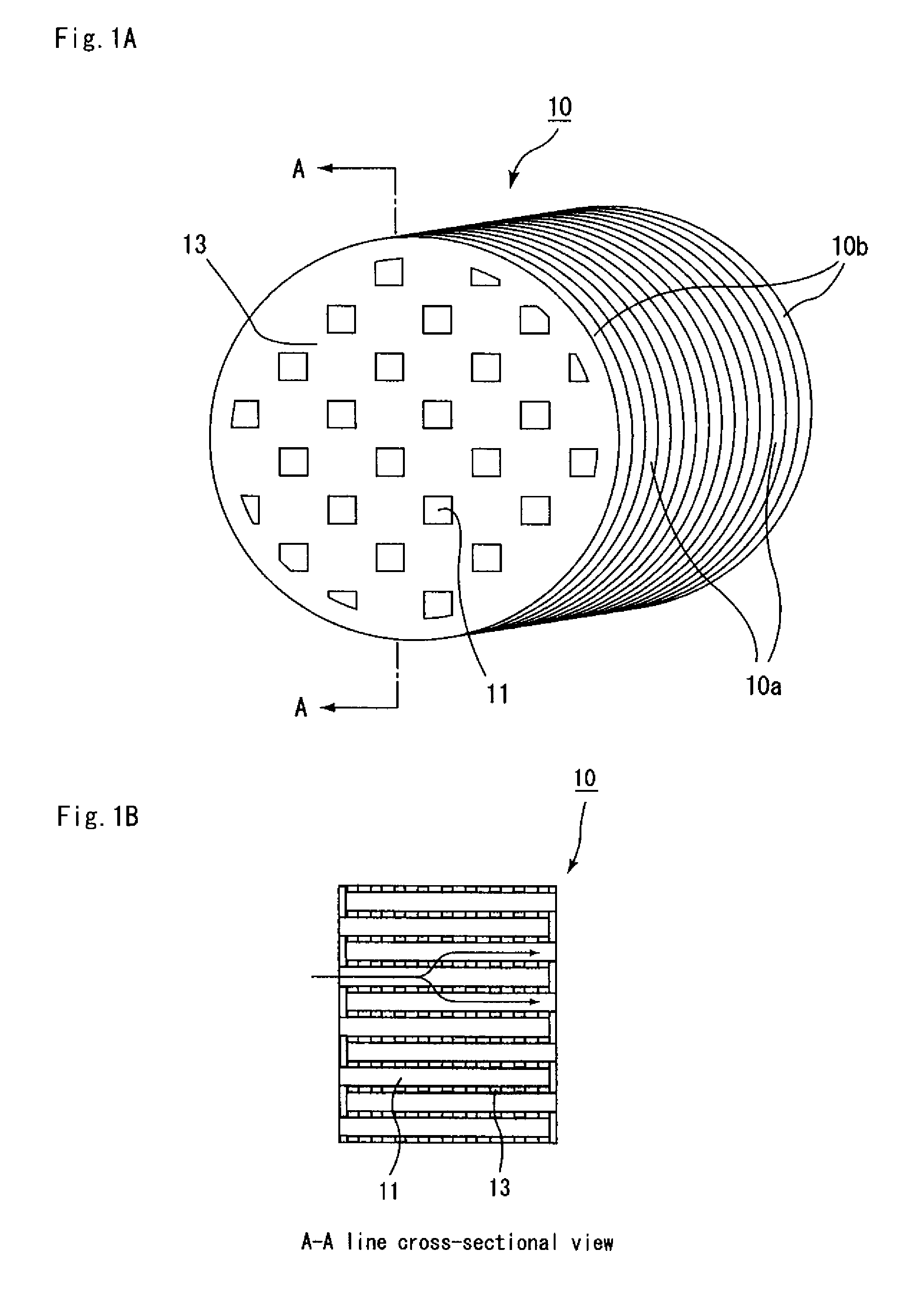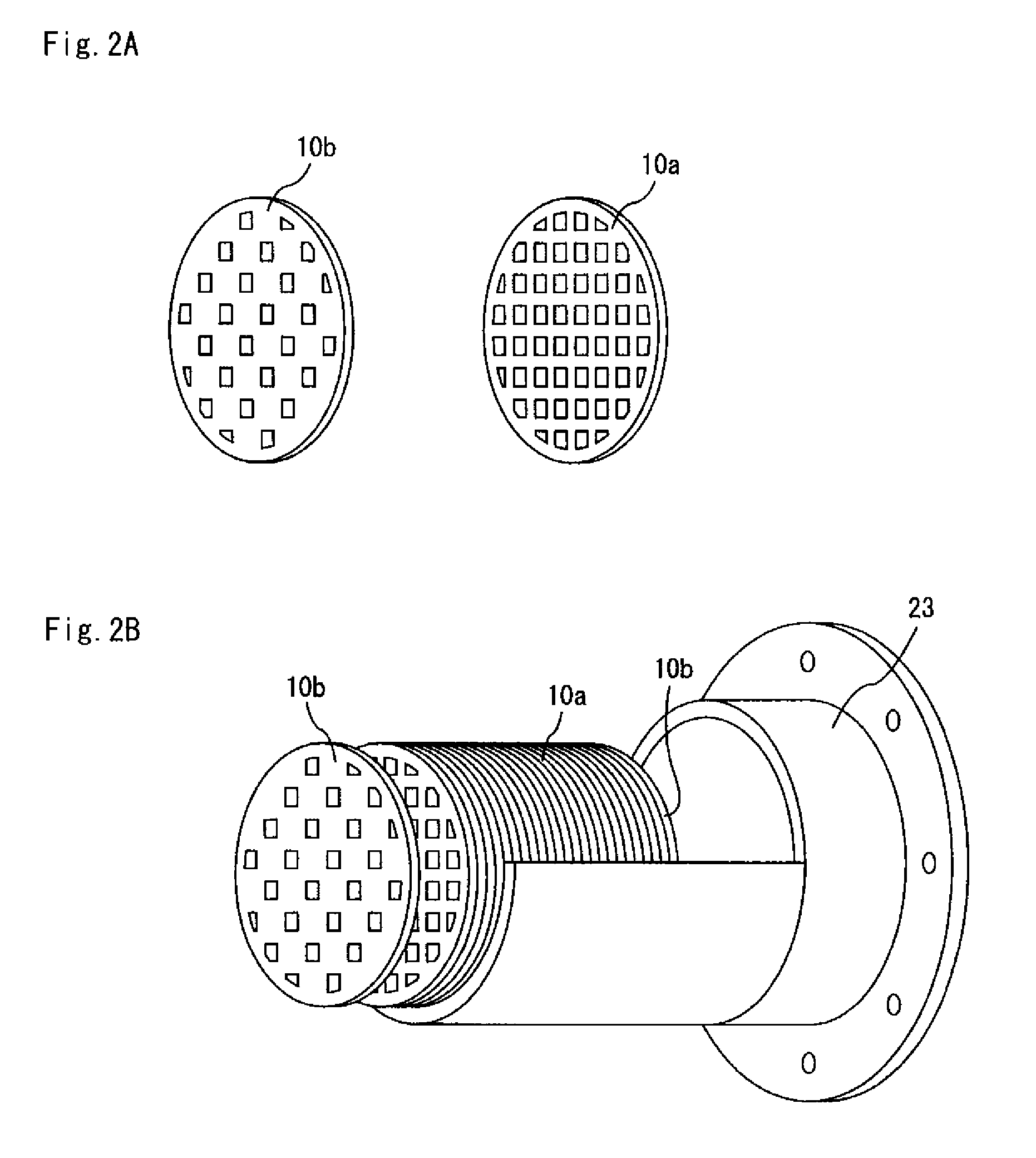Honeycomb structured body
a structured body and honeycomb technology, applied in the direction of exhaust treatment, electrical control, physical/chemical process catalysts, etc., can solve the problems of affecting the ventilation, affecting the environment and the human body, and causing serious problems
- Summary
- Abstract
- Description
- Claims
- Application Information
AI Technical Summary
Benefits of technology
Problems solved by technology
Method used
Image
Examples
example 1
(1) Preparation Process of Sheet-forming Slurry
[0246]First, alumina fibers (50 parts by weight), glass fibers (average fiber diameter: 9 μm, average fiber length: 3 mm) (50 parts by weight) and an organic binder (polyvinyl alcohol-based fibers) (10 parts by weight) were dispersed in a sufficient amount of water, and this was sufficiently stirred to prepare a sheet-forming slurry.
(2) Sheet-forming Process and Cell-forming Process
[0247]The slurry obtained in the process (1) was formed into a sheet by using a mesh having a diameter of 197 mm, and the resulting product was dried at 135° C. so that a sheet-shaped inorganic composite body having a diameter of 197 mm and a thickness of 5 mm was obtained. Next, this was subjected to a stamping process so that cells having a cell density of 3.72 pcs / cm2 and a cell-wall thickness (space between the cells) of 2 mm were formed over the entire face of the sheet-shaped inorganic composite body.
(3) Heating Treatment Process
[0248]The sheet-shaped i...
examples 2 to 16
[0254]Basically, the same processes as those in Example 1 were carried out, and the diameter of the mesh was adjusted according to the diameter of the honeycomb structured body, the number of inorganic fiber lamination members to be laminated was adjusted according to the length and porosity of the honeycomb structured body, the space between the cells upon stamping process was adjusted according to the thickness of the cell wall, and the degree of compression upon heating treatment process was adjusted according to the thickness and porosity at the time of sheet-forming to obtain honeycomb structured bodies having structures as shown in Tables 1-1 and 2-1.
[0255]In Examples 2 to 4, after lamination members having a porosity of 80% and thickness of 1 mm were laminated, the resulting body was subjected to pressing process to form a honeycomb structured body with a porosity of 70%. In Examples 5 to 12, after lamination members having a porosity of 90% and thickness of 1 mm were laminat...
example 17
(1) Manufacture of Lamination Member
[0256]A three-dimensional net-like metal porous member made of a Ni—Cr—W type alloy (product name: MA23 manufactured by Mitsubishi Materials Corp.; average pore diameter: 35 μm, porosity: 85%, thickness: 1 mm) was machined into a disc shape of 145 mm in diameter, and then further subjected to a laser machining process so that a metal lamination member in which cells were formed in almost the whole surface, with a cell density of 12.4 pcs / cm2 and a cell-wall thickness (space between cells) of 1.1 mm was manufactured.
(2) Laminating Process
[0257]A casing (can-type metal container) to one side of which a pressing metal member was attached was placed, with the side bearing the metal member attached thereto facing down. Then, through the same method in process (5) of Example 1, a lamination member for the end portion (metal plate-type member) in which cells are formed in checkered patterns at a predetermined position was manufactured. After one of the l...
PUM
| Property | Measurement | Unit |
|---|---|---|
| porosity | aaaaa | aaaaa |
| porosity | aaaaa | aaaaa |
| pore diameter | aaaaa | aaaaa |
Abstract
Description
Claims
Application Information
 Login to View More
Login to View More - R&D
- Intellectual Property
- Life Sciences
- Materials
- Tech Scout
- Unparalleled Data Quality
- Higher Quality Content
- 60% Fewer Hallucinations
Browse by: Latest US Patents, China's latest patents, Technical Efficacy Thesaurus, Application Domain, Technology Topic, Popular Technical Reports.
© 2025 PatSnap. All rights reserved.Legal|Privacy policy|Modern Slavery Act Transparency Statement|Sitemap|About US| Contact US: help@patsnap.com



